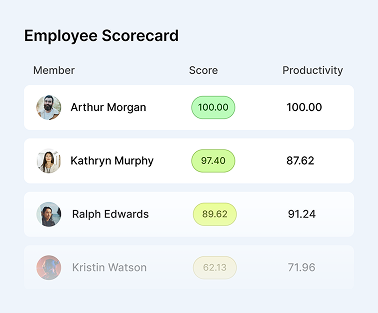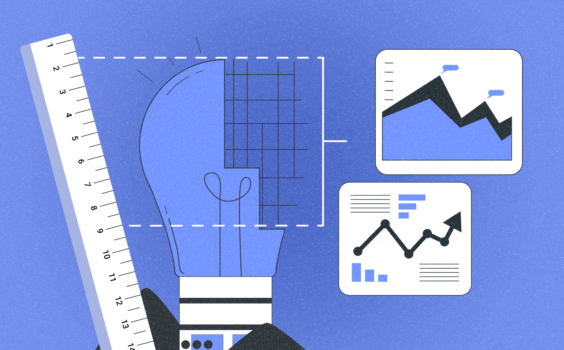20 Must-Have Productivity Software Solutions for Modern Businesses
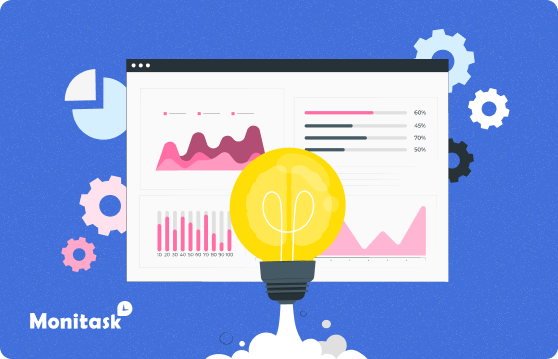
Every growing business faces the same challenge: how to get more done in less time without burning out teams or compromising quality. That’s where productivity software comes in.
From communication platforms to automation systems, modern businesses rely on a suite of powerful tools to streamline daily operations, enhance collaboration, and boost performance.
Among them, one category has become indispensable for remote and hybrid teams—time tracking and productivity monitoring software, with Monitask leading the way.
In this guide, we’ll explore 20 must-have productivity software solutions that can help modern organizations stay efficient, organized, and competitive.
What Is Productivity Software?
Productivity software encompasses digital tools and platforms designed to help businesses operate more efficiently. These solutions automate manual tasks, centralize communication, and give teams greater visibility into their workflows.
The scope of productivity software is vast. It includes everything from project management tools like Asana and Trello to communication platforms such as Slack and Microsoft Teams—and of course, dedicated solutions like Monitask that track work hours and improve accountability in distributed teams.
The ultimate goal of productivity software is simple: to help people work smarter, not harder. By minimizing distractions, reducing repetitive work, and creating transparency, these tools give teams the power to focus on what truly matters—growth, innovation, and customer satisfaction.
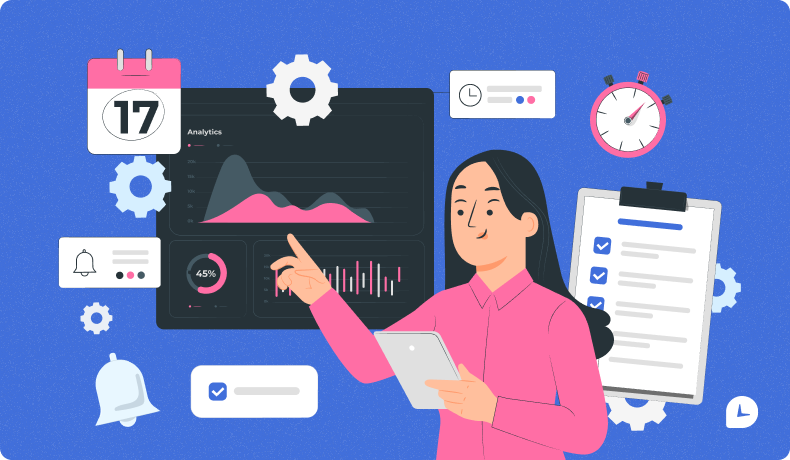
Why Do Businesses Need Productivity Software?
Modern workplaces are evolving faster than ever. Teams are increasingly distributed, clients expect rapid turnaround times, and competition is fierce across every industry. Without a proper system to manage workflows, communication, and performance, even the best teams risk falling into chaos.
Here are just a few benefits productivity software brings to the table:
✅ Streamlined collaboration: Shared dashboards and workspaces ensure everyone stays aligned.
✅ Improved communication: Centralized messaging platforms reduce email overload and confusion.
✅ Task automation: Repetitive tasks are handled automatically, freeing employees for higher-value work.
✅ Data-driven insights: Real-time analytics highlight bottlenecks and inefficiencies.
✅ Transparency and accountability: Tools like Monitask track productivity, giving leaders clear performance insights.
In short, productivity software doesn’t just help teams work better—it builds the foundation for sustainable business success.
20 Must-Have Productivity Software Solutions
Let’s explore the top productivity software solutions every modern business should know about.
These tools cover project management, communication, file sharing, automation, analytics, and more—all designed to enhance efficiency at every level.
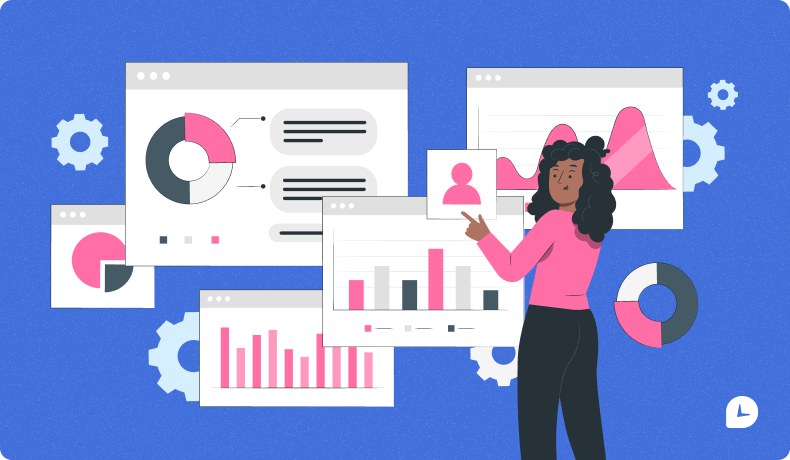
A. Project Management & Collaboration Tools
1. Asana
Asana is one of the most intuitive project management platforms on the market. It allows teams to create projects, assign tasks, set priorities, and track progress through visually appealing dashboards. With timeline and workload views, it helps managers balance responsibilities and avoid burnout.
Asana’s integrations with apps like Slack, Gmail, and Zoom make it an ideal choice for teams that need seamless coordination across tools.
2. Trello
Trello’s simple drag-and-drop board system makes it perfect for teams that love visual organization. Each project is represented by a board, and tasks are tracked through lists and cards that move across stages of completion.
It’s lightweight, flexible, and ideal for smaller teams or creative projects that thrive on visual clarity and collaboration.
3. Monday.com
Monday.com offers a visually stunning and highly customizable project management experience. Beyond task tracking, it supports workflow automation, time tracking integrations, and data dashboards that help decision-makers see progress in real time.
Its flexibility allows businesses of all sizes—from startups to enterprises—to design workflows tailored to their specific processes.
B. Team Communication Platforms
4. Slack
Slack has revolutionized internal communication. It replaces endless email threads with real-time chat channels, organized by teams, projects, or topics.
Its integrations with tools like Asana, Google Drive, and Monitask make it a central communication hub for remote and hybrid teams. Slack’s ability to combine quick chats with powerful integrations makes it one of the most essential productivity tools for modern organizations.
5. Microsoft Teams
Part of the Microsoft 365 ecosystem, Teams combines chat, video calls, and file sharing into a single, secure environment. It’s particularly effective for companies already using Microsoft products such as Outlook, Excel, and SharePoint.
For large enterprises, Teams provides robust administrative controls and enterprise-grade security, ensuring smooth collaboration across departments.
6. Zoom
Zoom remains the gold standard for online meetings and webinars. It’s reliable, easy to use, and offers features like breakout rooms, screen sharing, and recording.
In hybrid workplaces, Zoom bridges the physical and virtual worlds, making it an indispensable productivity tool for maintaining personal connections even when teams are miles apart.
C. Time Tracking & Employee Productivity
7. Monitask
Among all time tracking solutions, Monitask stands out as a comprehensive, user-friendly, and insightful productivity monitoring platform designed for remote and hybrid teams.
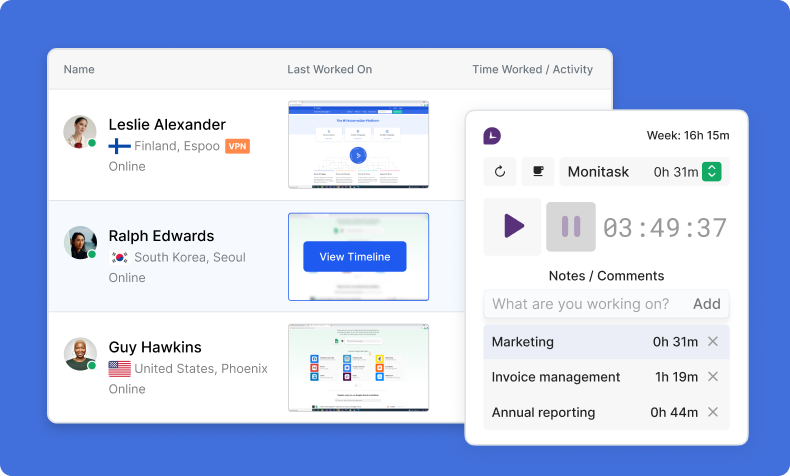
Why Monitask?
Unlike basic timers, Monitask provides deep visibility into how work hours are spent—without resorting to micromanagement. It automatically tracks active work time, monitors app and website usage, and can even capture optional screenshots for transparency.
Managers gain a real-time view of productivity levels, while employees can see their own performance metrics and stay focused on goals.
Key Features:
✅ Automatic time tracking across devices
✅ Optional screenshot monitoring for transparency
✅ Productivity reports and performance insights
✅ Project-based time logs for accurate billing
✅ Integration with payroll and project management tools
Benefits for Businesses:
✅ Boost accountability: Managers know exactly how work hours are utilized.
✅ Enhance performance: Real-time analytics reveal productivity trends.
✅ Simplify payroll: Monitask converts tracked time into clear reports for billing and payments.
✅ Support hybrid teams: It helps maintain visibility and trust when employees work remotely.
In short, Monitask empowers businesses to balance productivity and flexibility. It’s not about surveillance—it’s about empowering teams to deliver their best work efficiently and transparently.
D. File Management & Cloud Storage
8. Google Workspace
Formerly known as G Suite, Google Workspace remains one of the most comprehensive cloud productivity platforms. It offers Gmail, Google Drive, Docs, Sheets, Slides, and Meet—all synchronized for real-time collaboration.
Its intuitive sharing system and auto-save features make it a top choice for teams working across multiple time zones.
9. Dropbox Business
Dropbox Business focuses on secure file storage and sharing. With smart sync, version history, and powerful sharing permissions, it’s an essential solution for companies handling sensitive data or large collaborative projects.
10. Notion
Notion is an all-in-one digital workspace that combines notes, project management, and databases. Teams use it to organize documentation, create wikis, and manage tasks—all within a sleek and customizable interface.
Its biggest strength is flexibility: whether you’re writing content, tracking projects, or building knowledge bases, Notion adapts to your workflow.
E. Automation & Workflow Optimization
11. Zapier
Zapier is the ultimate automation connector. It links thousands of apps—like Gmail, Slack, and Monitask—so that repetitive tasks can run automatically.
For example, you can set it to automatically log tracked hours from Monitask into Google Sheets or send notifications to Slack when a task is completed.
12. Make (formerly Integromat)
Make is a more visual and advanced automation platform. It allows teams to design complex workflows with multiple steps and conditions—ideal for technical teams that want fine-grained control over how data flows between systems.
13. HubSpot
HubSpot goes beyond marketing—it’s a complete CRM and automation platform that aligns marketing, sales, and customer service. From lead tracking to email campaigns, HubSpot automates every stage of customer interaction, ensuring consistency and efficiency.
F. Analytics, Reporting & Performance Tracking
14. Tableau
For businesses serious about data visualization, Tableau is a must-have. It turns raw data into interactive dashboards and graphs, helping leaders make informed decisions based on real-time insights.
15. Google Analytics
Still one of the most popular analytics tools in the world, Google Analytics helps businesses understand how visitors interact with their websites. It tracks traffic sources, user behavior, and conversion rates—essential for optimizing marketing and customer experience.
16. ClickUp
ClickUp is an all-in-one platform combining project management, analytics, and goal tracking. Its dashboards help businesses monitor KPIs, productivity metrics, and project progress from one centralized view.
G. Focus & Personal Productivity Tools
17. Todoist
Todoist is a powerful yet simple task management app for individuals and teams. It helps users organize priorities, set reminders, and build habits through daily and weekly productivity tracking.
18. Evernote
Evernote remains a top tool for organizing thoughts, notes, and ideas. Its ability to sync across devices makes it perfect for busy professionals who need to capture inspiration anytime, anywhere.
19. Grammarly
Grammarly ensures your written communication is clear, professional, and error-free. Whether you’re drafting emails, reports, or blog posts, Grammarly helps maintain a polished brand voice across the organization.
20. Miro
Miro is a digital whiteboard for brainstorming, collaboration, and strategy sessions. Teams can sketch ideas, create mind maps, and plan visually—making remote collaboration as dynamic as an in-person meeting.
Maximize productivity of your business
Track employee productivity and simplify work with them
How to Choose the Right Productivity Software?
With so many tools available, choosing the right combination can feel overwhelming. The key is to start by assessing your team’s needs and growth stage.
Here’s a simple decision checklist:
Remember, the best productivity software suite isn’t necessarily the most expensive—it’s the one that aligns perfectly with your team’s workflow.
Best Practices for Maximizing Productivity Tools
Even the most advanced software won’t make a difference if your team doesn’t use it effectively. Start by encouraging adoption through proper training, making sure everyone understands how to use each platform confidently and efficiently.
Integration is also key—when your tools work together, data flows smoothly and silos disappear, making the whole system more effective.
Don’t forget to track progress through analytics; reviewing usage data regularly can help you identify what’s working, where teams are getting stuck, and how to improve.
Most importantly, foster a culture of transparency. Tools like Monitask are most powerful when used to empower people, not control them.
And finally, keep optimizing. As your business evolves, so should your tool stack—continuously refining it to match new goals and workflows.
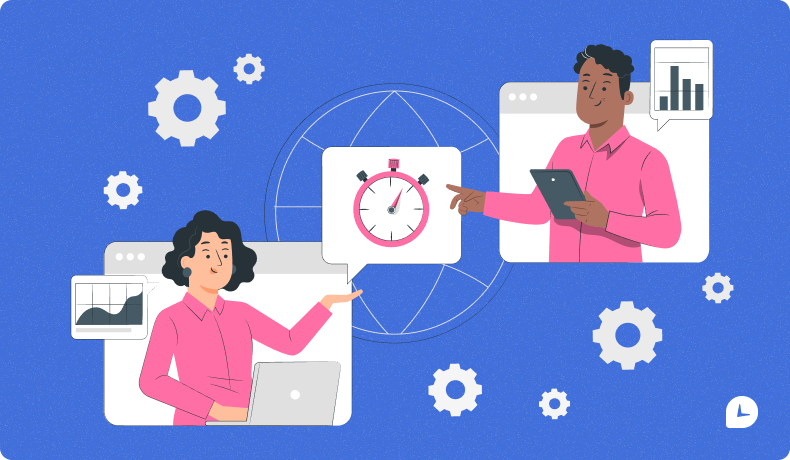
Conclusion: Your Productivity Stack for Success
In a world where every minute counts, productivity software isn’t a luxury—it’s a necessity.
Whether it’s managing projects through Asana, collaborating via Slack, or tracking performance with Monitask, these tools help businesses move faster, smarter, and more strategically.
Monitask, in particular, stands out as a game-changing platform for modern teams. It bridges the gap between accountability and autonomy—giving managers real insights while empowering employees to take ownership of their time and results.
By adopting the right mix of these 20 essential tools, your organization can streamline operations, strengthen collaboration, and unlock its full potential.
Because in today’s competitive landscape, productivity isn’t just about working harder—it’s about working better. And with the right software stack, your business can do exactly that.
– The Monitask Team
FAQ: Smart Productivity Solutions for Modern Teams
Why is Monitask recommended for remote teams?
Monitask provides real-time visibility into work hours, app usage, and productivity trends—making it ideal for managing distributed teams without micromanaging.
How do I choose the right productivity tools for my business?
Start by identifying workflow pain points, define your goals, test tools with free trials, and ensure the tools you pick integrate well and scale with your business.
Can productivity software really improve team performance?
Yes—by automating routine tasks, centralizing communication, and providing performance insights, these tools help teams focus on higher-value work.
Are these tools suitable for small businesses or just large enterprises?
Most tools listed, including Monitask, Asana, and Slack, are scalable and offer plans tailored for startups, small teams, and growing companies.
